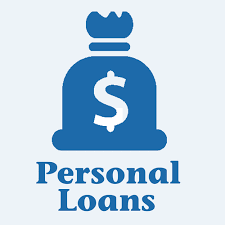STEPS
- 1. Check your credit
- 2. Calculate your loan payments
- 3. Research and compare lenders
- 4. Get pre-qualified personal loan offers
- 5. Select a lender and complete your application
- 6. Read the fine print
- 7. Sign a loan agreement and get funded
Shopping for a personal loan doesn’t have to be complicated. Understanding where to start, what you need to apply, and how to compare offers can help you select the best personal loan.
Below are seven steps to help you through the process of finding and getting a personal loan.
1. Check your credit
Start out by checking your credit score to assess your financial picture. A high score gives you a better chance of loan approval and a lower interest rate.
Credit scores typically fall into these categories.
-
720 and higher: Excellent credit.
-
690-719: Good credit.
-
630-689: Fair or average credit.
-
300-629: Bad credit.
» How's your credit? Check your score for free on NerdWallet
Fix any errors on your credit report that might be dragging your score down. You can request a credit report from each of the three major credit bureaus — Equifax, Experian and TransUnion — and dispute wrongly reported missed payments or other inaccuracies it may contain.
Be sure to make on-time payments toward credit card and other loan payments, and keep your credit utilization (the amount of credit you use relative to credit limits) low as these are the biggest factors affecting your score.
2. Calculate your loan payments
Knowing your estimated loan payments can help you decide whether you can afford to take on a personal loan.
First, determine how much money you need from a loan. You’ll want to make sure that amount includes any fees a lender may charge. Origination fees, which range from 1% to 10% of the loan, are typically subtracted from the loan proceeds.
Then, use your credit score to estimate what annual percentage rate a lender might charge. While the APR you receive depends on your unique credit and financial profiles, as well as your lender’s underwriting, the table below shows estimated personal loan APRs based on credit score range.
3. Research and compare lenders
You can find personal loans at online lenders, banks and credit unions, but some lenders work better for certain borrowers and loan purposes than others. For example, some lenders offer features to help specifically with debt consolidation, others specialize in lending to borrowers with bad credit.
It’s a good idea to research different lenders to find one that’s best for your needs. Here are a few key features to compare between lenders.
-
Credit score requirements: Online lenders offer loans to borrowers with credit scores across the spectrum, while banks tend to require good to excellent credit, and credit unions are more likely to accept loan applications from bad-credit borrowers.
-
Loan amount and repayment term availability: Personal loans typically range from $1,000 to $100,000 with repayment terms from two to seven years. Look for lenders with loan amounts and repayment terms that match your borrowing needs. For example, credit unions can often provide small loans of $2,500 or less with low APRs.
-
Funding time: You can expect to receive funds within a week after loan approval, but online lenders typically provide the fastest funding times.
-
Co-signed, joint and secured loan availability: Some lenders will allow you to add a co-signer or co-borrower to your loan application or pledge collateral to secure a loan. Opting for a co-signed, joint or secured loan may help you qualify or get a lower rate.
4. Get pre-qualified personal loan offers
Once you’ve identified a few lenders you prefer, it’s time to pre-qualify. Most lenders offer pre-qualification. This is an important step because pre-qualifying gives you a preview of the loan offers you may receive, including your estimated APR.
Lenders typically perform a soft credit check during pre-qualification that doesn’t affect your credit score. Pre-qualify with multiple lenders to compare estimated rates and payment amounts.
During the pre-qualification process, you must provide personal information, such as your name, date of birth, income, and loan purpose.
5. Select a lender and complete your application
Once you’ve selected a lender that matches your needs, you can formally apply for the loan. Application requirements vary by lender, but you’ll likely need:
-
Identification: A passport, driver’s license, state ID or Social Security card.
-
Verification of address: Utility bills or lease agreement.
-
Proof of income: Pay stubs, bank statements or tax returns.
The lender will run a hard credit check that may temporarily decrease your credit score by a few points and can show up on credit reports for 24 months.
Some lenders provide an immediate approval decision while others may take a couple days.




